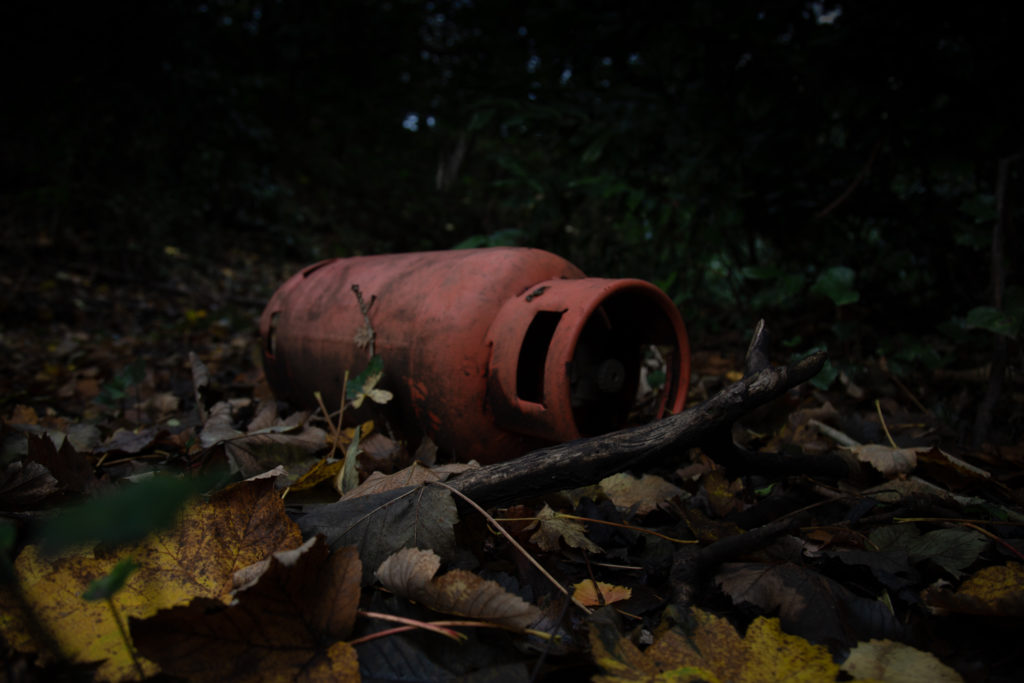
Abandoned
This place used to be called Killicks Farm. There is nothing to hint at that name now, I only know because I found a map from 1878 of the area. A farm on the top of a hill, at the edge of a small market town in the Sussex countryside.
Even at the end of the 19th century, the farm was bounded to the south by a railway line. The land had been broken and reshaped to allow passengers to travel from Crawley in the west to Tunbridge Wells in the east. The train whistles and the rattle of waggons would have been clearly heard by the cows on Killicks Farm and by the people who ran the farm.
Those whistles heralded the end of the farm. The land changed hands and work began to build a railway line north, towards London. Killicks Farm wasn’t needed for the mainline. A curving loop was to be built so that trains could transfer from the north-south line to the east-west line. So one day the cows were led off the farm for the last time and were replaced by teams of men with digging tools. First, the soil that contained the life and productivity of the farm was dug up and stripped away. Then they started digging into the underlying rock, going down around 10 metres, splitting the hilltop and providing a level route for trains to get from the north of the town to the station further south.
The loop isn’t just a simple cut through the earth. Roads that had been severed by the cutting had to be reinstated on top of brick-built bridges. Where the sides of the cutting were especially high and steep, elaborate retaining walls had to be built to immobilise the land. Finally, a crushed stone trackbed was created, sleepers and rails were laid and then trains could begin to use the new route. A pastoral scene was transformed into a place of broken rock, iron and steam.
In the late Victorian era and the first half of the twentieth century, the railways were how the country moved around. Passengers, freight, livestock, mail, food and supplies for war moved more reliably than ever before, freed from having to travel on poor quality, muddy roads.
The industrial ingenuity that built the railways soon moved on to new innovations. Cars, buses and lorries became more popular ways of getting around. The quality of road surfaces improved in response to the needs of these vehicles. By the 1960s, the railways were in decline and losing money. The solution was radical. Close the lines that were losing the most money and shrink the network to the profitable commuter routes.
The east-west route was closed. The route south from the town to Lewes was closed. The loop was closed. Signals, rails and sleepers were removed. Only the mainline to London remained.
The loop became quiet. It was a route that was of no use to anyone. Despite all the outrages committed upon it, nature started to occupy this place. Scrub and then trees began to grow, badgers dug setts, birds built nests. Cars, buses and lorries crossed the bridges in increasing numbers. Frequently, the bridges support traffic jams, not travel. The loop lies beneath the bridges, largely forgotten by local people.
Now, if you venture into the loop from the southern end, two impressions dominate; nature and rubbish. These are impressions at odds with each other. Nature produces no rubbish. Everything decomposes and feeds future generations. Humans produce enormous amounts of rubbish which are a problem for future generations. This dichotomy plays out in the loop. Scrub grows abundantly, providing protection for saplings. Beercans and fast-food wrappers rain down from the bridges as drinkers stumble home. Birdsong fills the air as a wheeled hospital chair faces the sunset. Delicate moss invades a ruined television. Foxes trot past a discarded propane gas bottle.
In our system of stuff, food wrapping and elderly consumer goods have no value. But a gas bottle does. When you buy gas, the price includes a deposit on the container. Return the bottle and you get your money back. It’s a good system. But someone was too lazy or in too much of a hurry to make this simple contribution to the circular economy. I will never know how this bottle got to be on the abandoned trackbed of the loop. I suspect that builders working at one of the houses that back onto the rim of the cutting, couldn’t be bothered to return the bottle and rolled it down the slope instead. But I will never know for sure.
So this bottle will continue to lie amongst the leaves and moss. Its strange dull orange colour permanently at odds with the shades of green and brown around it. It will remain a testament to our way of life. Of abandoning things that we no longer have a use for, rather than making them into something new. Nature is expert at converting dead and discarded material into new life. We humans are incredibly poor at doing this.
This is why an abandoned gas bottle lies on an abandoned trackbed at the bottom of an abandoned railway cutting. Abandoned, discarded and someone else’s problem.